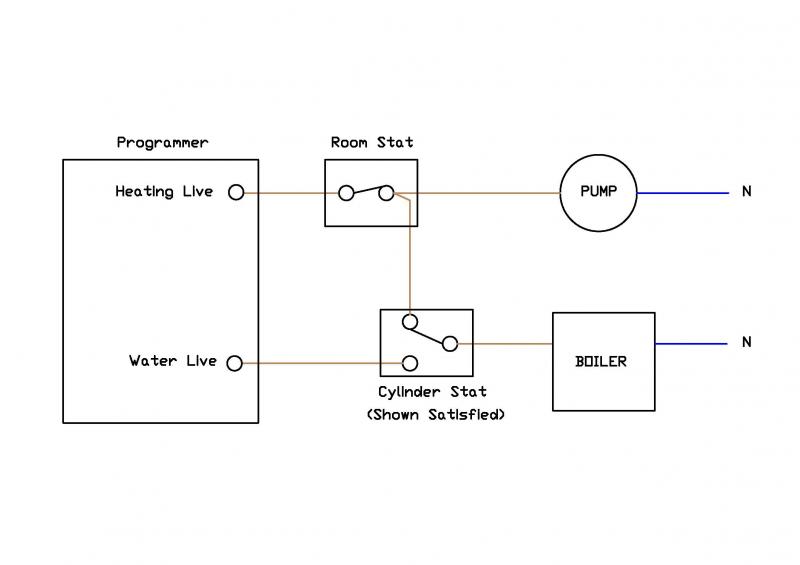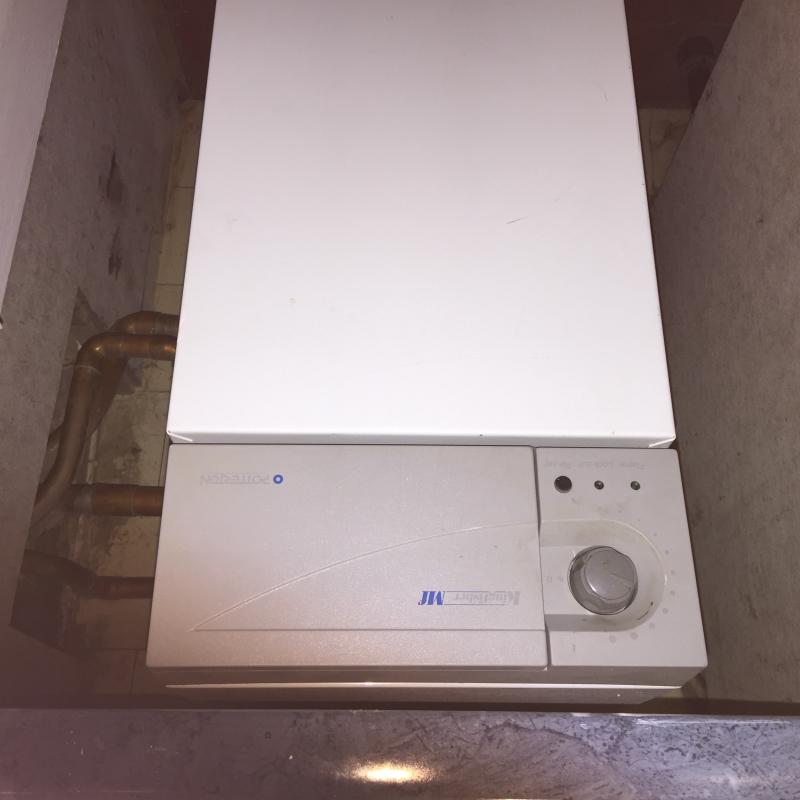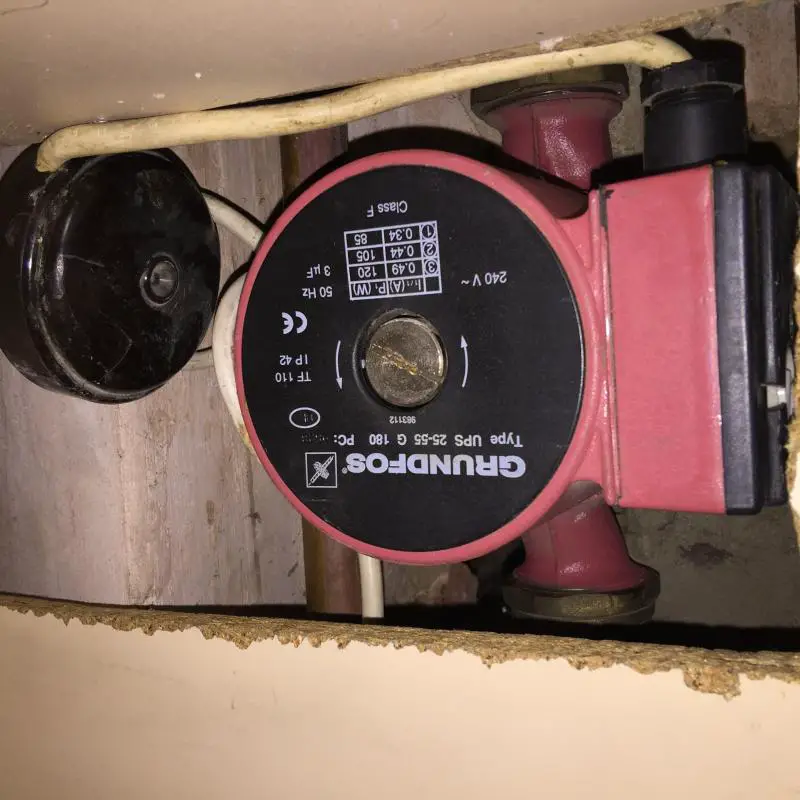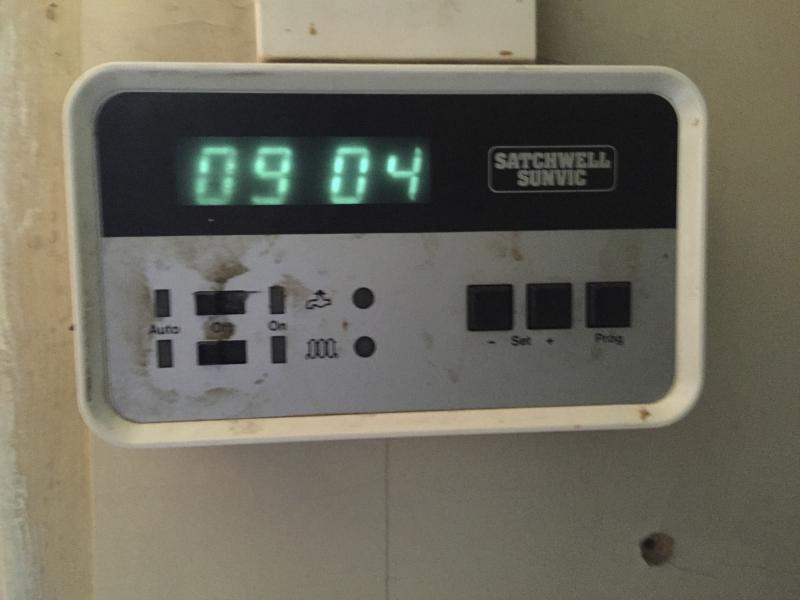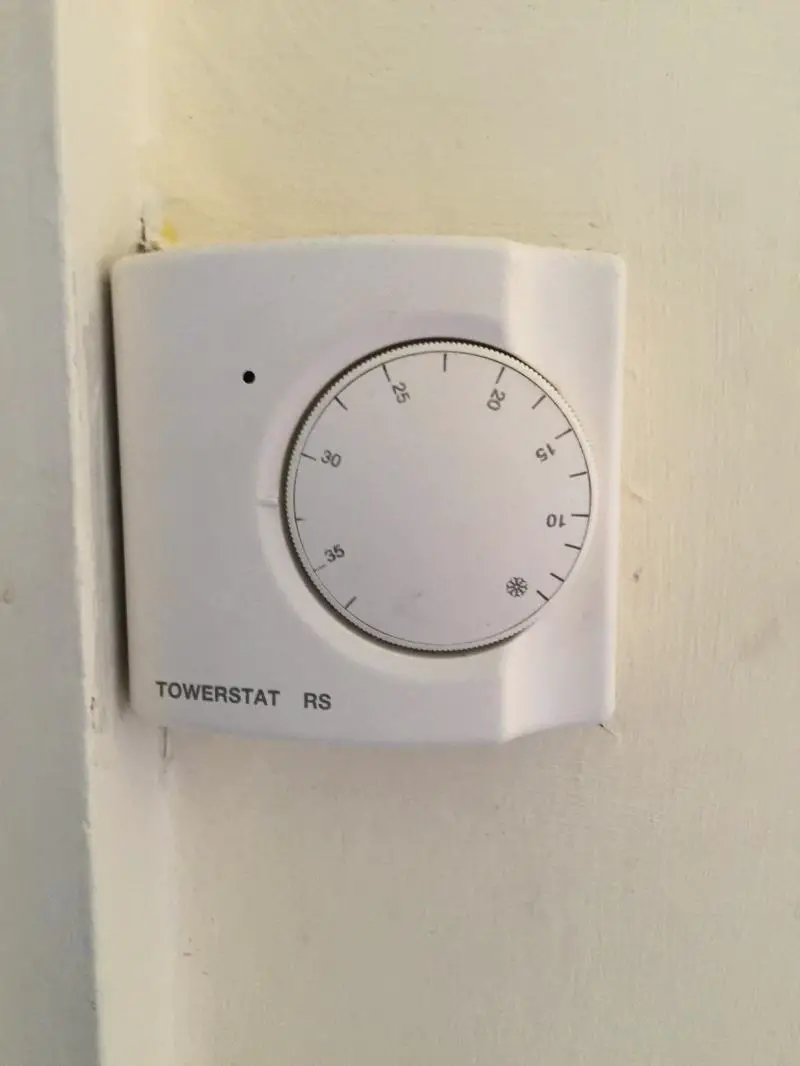I'm trying to work out if there's any point in fitting a relay to allow for independent operation of the CH and HW.
I have a gravity fed system at my house supplied by a Potterton boiler.
I recently had my local electrician replace a prehistoric satchwell programmer (no battery back up, so losing the programme everytime there was an electric cut or if I turned off the electrics to do some works was driving me mad) with a Drayton programmer. At the time my electrician told me the hot water would need to be on to trigger the central heating.
satchwell programmer (no battery back up, so losing the programme everytime there was an electric cut or if I turned off the electrics to do some works was driving me mad) with a Drayton programmer. At the time my electrician told me the hot water would need to be on to trigger the central heating.
Shortly thereafter I decided to replace our wildly inaccurate wall thermostat (needed to be at 35 C to heat the living room to 20 but then kept the heating on until we cooked!) with a nest thermostat, which was installed yesterday.
The Nest installer told me the hot water would need to be on all the time to allow the Nest thermostat to control the central heating. He told me fitting a relay would allow the Nest to operate the central heating independently of the hot water, otherwise the Nest would only control the heating when the hot water was on.
However, I have a (separate) hot water cylinder thermostat which turns off the boiler once the water in the cylinder is at the required temperature.
Let's assume I leave the hot water on 24-7 to allow the central heating to operate. Is there any point in fitting a relay to allow for independent control of the central heating as suggested by the Nest installer, given that the hot water cylinder thermostat would seem to prevent continuous operation of the boiler?
Apologies if this is a dumb question and thanks in advance for any thoughts you might have.
I have a gravity fed system at my house supplied by a Potterton boiler.
I recently had my local electrician replace a prehistoric
Shortly thereafter I decided to replace our wildly inaccurate wall thermostat (needed to be at 35 C to heat the living room to 20 but then kept the heating on until we cooked!) with a nest thermostat, which was installed yesterday.
The Nest installer told me the hot water would need to be on all the time to allow the Nest thermostat to control the central heating. He told me fitting a relay would allow the Nest to operate the central heating independently of the hot water, otherwise the Nest would only control the heating when the hot water was on.
However, I have a (separate) hot water cylinder thermostat which turns off the boiler once the water in the cylinder is at the required temperature.
Let's assume I leave the hot water on 24-7 to allow the central heating to operate. Is there any point in fitting a relay to allow for independent control of the central heating as suggested by the Nest installer, given that the hot water cylinder thermostat would seem to prevent continuous operation of the boiler?
Apologies if this is a dumb question and thanks in advance for any thoughts you might have.


